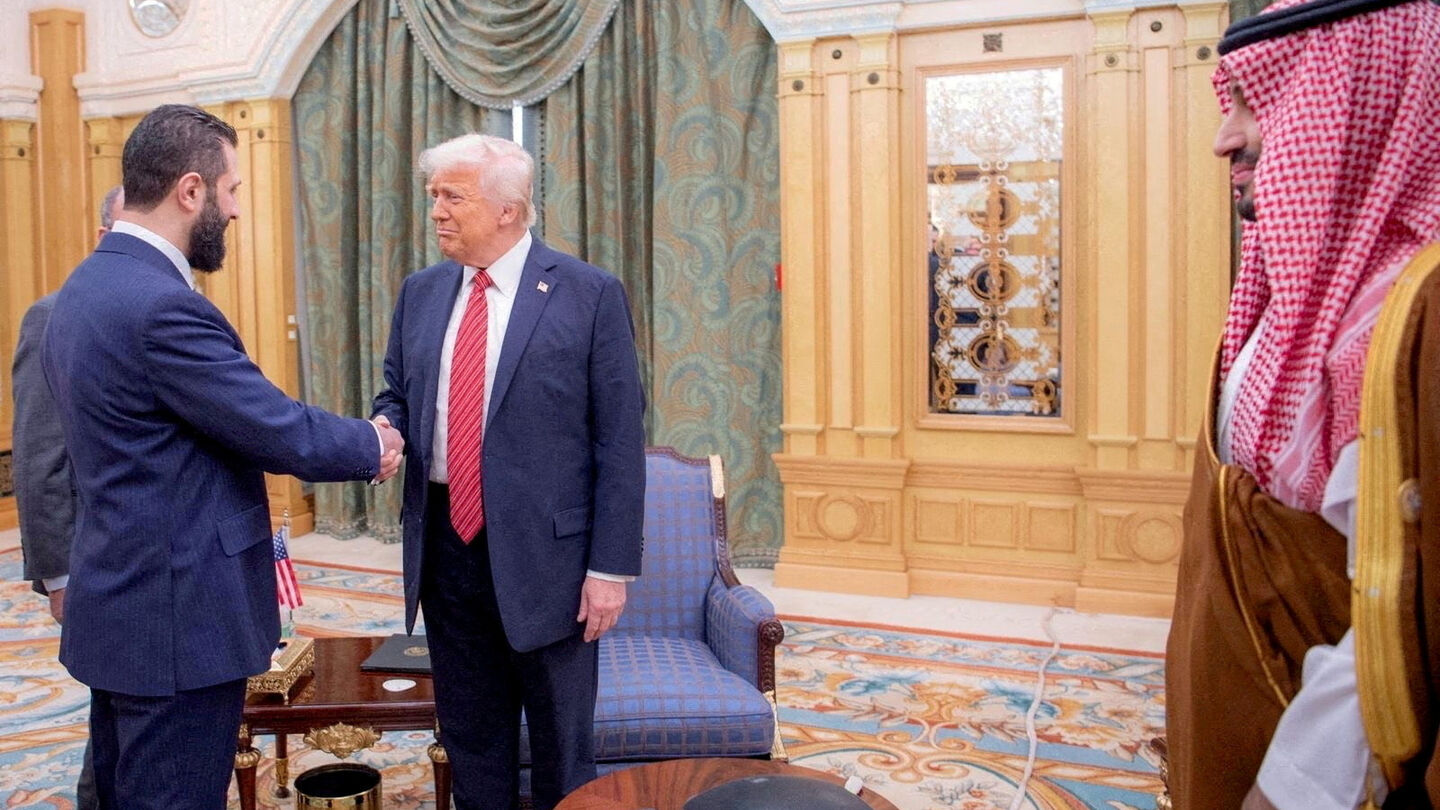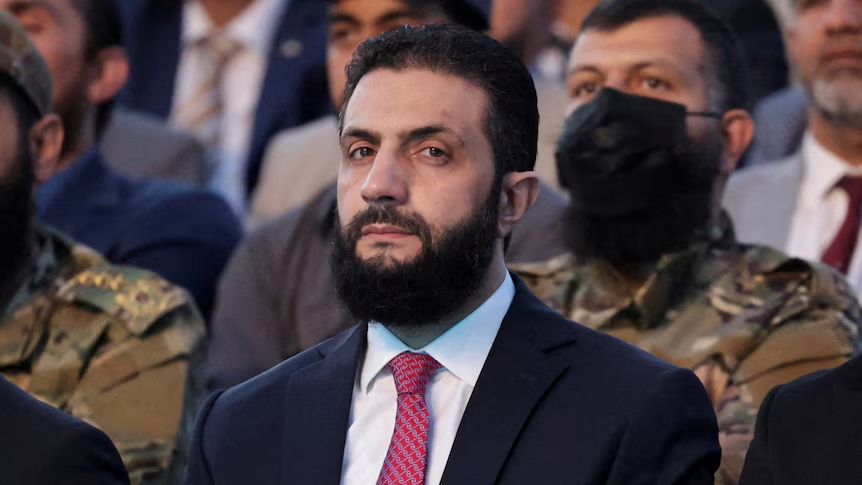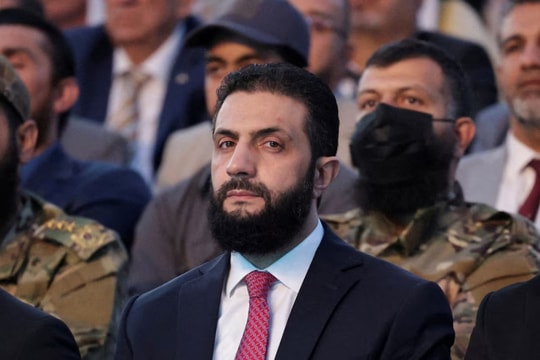“New Syria” and the diplomatic test in Washington
Syrian President Ahmad al-Sharaa’s first official visit to the United States marks a historic turning point in relations between two countries that have been at odds for decades. The event not only represents Damascus’s efforts to re-engage internationally, but also represents an important test for the foreign policy of a “new Syria,” a country seeking to reshape its position and restore its image after more than a decade of war.
Historical turning point
Syrian President Ahmed al-Sharaa arrived in the United States on November 9 for a landmark official visit, just a day after Washington officially removed him from the terrorist blacklist. Mr. al-Sharaa is expected to hold talks with US President Donald Trump at the White House on November 10. This is the first visit by a Syrian head of state to the United States since the country gained independence in 1946, marking the beginning of a new chapter in relations between the two countries, opening up the possibility of restoring the dialogue channel that had been severed since the two countries fell into confrontation over the Syrian civil war and international terrorism issues.
President Donald Trump’s initiative to invite Mr. al-Sharaa to visit the United States represents a clear shift in Washington’s policy, from a hardline stance on sanctions to a trend of “conditional re-engagement.” In the context of regional powers such as Saudi Arabia, Türkiye and Iran all seeking to establish a position in “post-war Syria,” the United States seems to not want to be left out of the process of shaping a new order in the region. Mr. Trump’s announcement to lift most sanctions and pledge to support Damascus in joining the international coalition against the Islamic State (IS) is both a symbolic step and a signal of a more pragmatic US strategy.

For Syria, the visit to the White House is a historic opportunity to affirm the legitimacy and international standing of the new government. After more than a decade of isolation, the reception of al-Sharaa, the former leader of the Hayat Tahrir al-Sham (HTS) rebel force, as a legitimate head of state shows that the international community is gradually accepting the new political reality in Damascus. It can be seen that since coming to power, the new Syrian government has sought to break with its violent past, moving towards a more moderate image, more acceptable to the people at home and the international community. Mr. Michael Hanna, Director of the US Program at the International Crisis Group, commented: "The visit to the White House is another demonstration of the US commitment to the 'new Syria' and is a highly symbolic moment for the country's new leader, who continues his incredible journey from jihadist commander to global statesman." The move by the US, UK and the United Nations to lift sanctions on Syrian President Ahmad al-Sharaa not only has economic significance, but is also a "passport" for Syria to access international financial institutions, paving the way for the country's reconstruction process worth hundreds of billions of dollars.
Strategically, Washington sees the “new Syria” as a potential partner in maintaining regional stability, especially as extremist groups remain present in eastern and southern Syria. The US’s consideration of establishing a limited military presence at an air base near Damascus to support a security agreement between Syria and Israel suggests that Washington’s goal is to control the Middle East security space from within, rather than just monitoring it from afar.
Both sides have clear interests in improving relations. Syria needs resources, investment, and international recognition to recover economically. The United States needs a stable partner to prevent the return of IS and limit Iranian influence. If the contacts in Washington lead to a mechanism for substantive cooperation, it could be the beginning of a normalization process between Syria and the West, a step that would not only be symbolic after years of bloodshed, but also contribute to reshaping the security architecture of the Middle East in the “post-IS” period.
Diplomaticbalanceof Syria
Interim President Ahmed al-Sharaa’s historic visit to Washington is not a stand-alone diplomatic event, but part of a broader multilateral diplomatic strategy pursued by Syria’s new government. After years of isolation, Damascus appears to be seeking to build balanced relations with major powers like the US and Russia, while expanding dialogue with regional powers, in order to strengthen its position and accelerate the country’s reconstruction.

With the US, Syria aims to join the international coalition against the Islamic State (IS), while seeking assistance in reconstruction and sanctions relief, essential elements to restore a country that has just experienced 14 years of civil war. Meanwhile, Russia remains an irreplaceable strategic partner. Moscow plays a key role in stabilizing Syria's security and politics, maintaining a military presence, supporting security mechanisms and protecting Russia's strategic interests in the Middle East. Mr. al-Sharaa's visit to Russia in mid-October 2024 affirmed the need for Syria to maintain a long-term dialogue and cooperation channel with Moscow to ensure internal security, regional stability and rebuild important infrastructure.
Not only focusing on the two major powers, the new Syrian government has also expanded relations with Middle Eastern and Gulf countries, including Türkiye, Saudi Arabia, and the United Arab Emirates, in search of economic support, energy and trade cooperation. At the same time, Syria has also promoted diplomatic relations with European countries to gradually eliminate isolation, improve its international image and strengthen the legitimacy of the transitional government.
This multilateral diplomatic strategy has several important implications. First, it helps Syria reassert its status as an independent and sovereign state, minimizing the risk of dependence on a single party. Second, simultaneously connecting with Washington, Moscow, and regional partners allows Damascus to maximize economic and political benefits, from aid and investment to internal security. Third, regionally, Syria is reestablishing its balancing role, contributing to reducing tensions between external forces.
However, according to observers, the challenges remain great. Syria needs to maintain flexibility in foreign affairs, avoiding being caught up in conflicts of interest between the US and Russia, as well as between regional powers. At the same time, the al-Sharaa government must resolve internal issues such as ethnic divisions, factional reconciliation, and security stability, if these diplomatic steps are to truly bring long-term effectiveness. Overall, Syria's multilateral diplomatic strategy is an important test for a "new Syria": seeking international cooperation, asserting sovereignty, and aiming for economic recovery and social harmony./.




